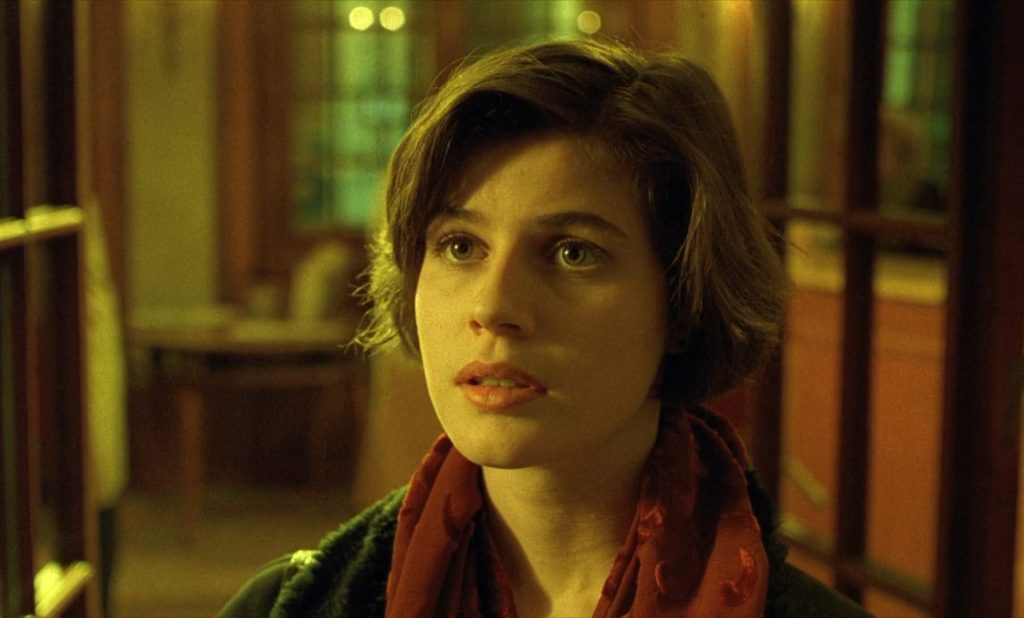
The Double Life of Veronique
1991, directed by Krzysztof Kieślowski
The Double Life of Veronique is a story of two women, Weronika in Poland and Véronique in France, each played by Irène Jacob, with hints of an uncanny connection between them. Though the film is a Polish co-production, its title is written only in French, as if ignoring Weronika. If the “double life” refers to the duality of the two Veronicas, as most viewers probably assume, then the exclusion of Weronika would be a trivial point to make – one name should suffice for both women – but there’s evidence for a second meaning, a kind of resurrection, a second life granted only to Véronique.
The first hint of resurrection is in the opening minute, which introduces the child Weronika at Christmastime and Véronique in springtime, the season of renewed life and liturgical Easter. Second, the puppet show depicts a dancer’s metamorphosis after death into an angelic butterfly; and third, the puppeteer Alexandre Fabbri summons Véronique to the Gare Saint-Lazare, whose namesake Lazarus rose from the grave back to life.
Unlike her Polish counterpart, Véronique doesn’t literally die within the story, but the film ends with a sense of release, a symbolic resurrection, a new chance at life that seems to hit many viewers emotionally. If we take care to define precisely what brings her to that point, the film will reveal an extraordinary logic that reinforces its emotional effect.
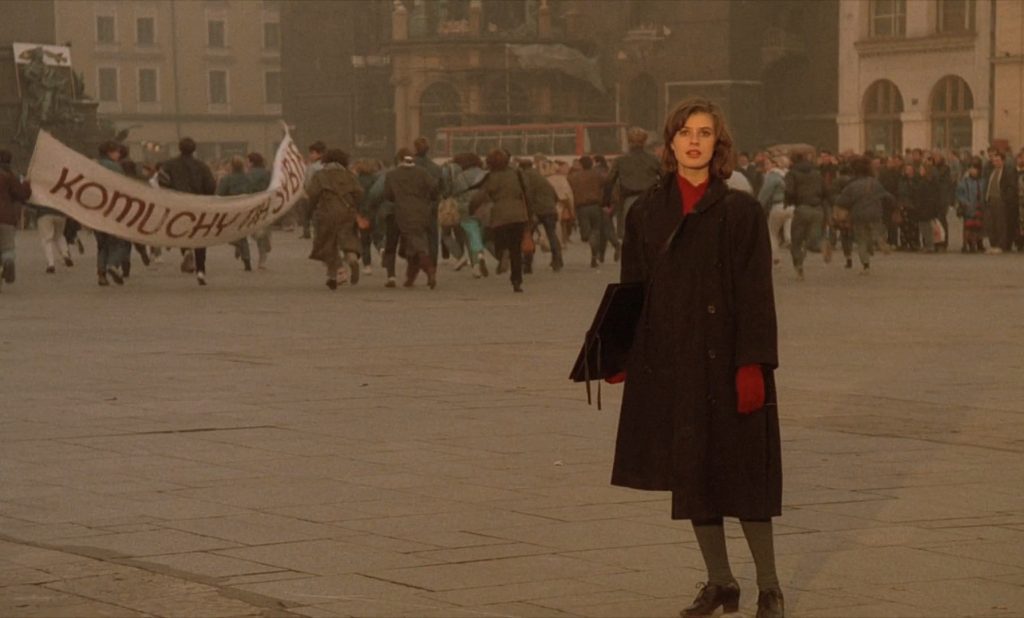
The settings in Poland and France can hardly be neutral, especially amid the crumbling of the Iron Curtain when the film was made… and yet, apart from a Lenin statue being relocated, and an anticommunist protest when the two Veronicas briefly cross paths in Kraków, the film is not overtly political. Although we cannot rule out some greater historical resonance, the specific selection of Poland and France also suggests an autobiographical purpose, as the film marks a shift in Kieślowski’s career from his native Poland to France, where his next three films will interpret the three ideals represented in the French tricolor.
The character of Alexandre Fabbri is another reason to suppose an element of autobiographical intent, because he does to Véronique exactly what the director does, making a double likeness of her and composing a story that shares the film’s premise. Fabbri, whose name is close to fabriquer (to make), seems to stand for the Artist in general, and like Godard’s figure of Pierrot, who represented Art itself in Pierrot le fou, he’s linked with a stock character from commedia dell’arte. We see in a bookshop window that he won the 1990 Prix Arlequin, and when Véronique runs away, she spies him through a harlequin-patterned window.
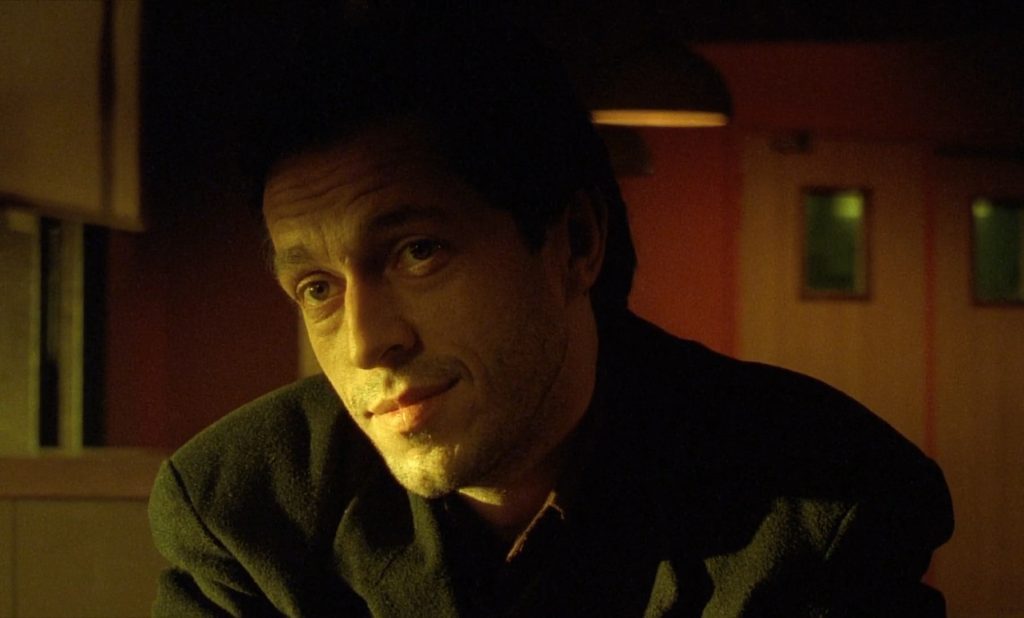
The Double Life of Veronique was not only a geographical transition for Kieślowski, it also marked a shift from male to female protagonists. Kieślowski’s roots were in documentary filmmaking, and his student manifestos showed a disdain for fictional storytelling. Although he had been making narrative fiction for fifteen years before Veronique, we can imagine that the construction of an artificial character, particularly of the opposite sex, was a problem for him – enough of a problem to dramatize in a movie. Let us then hypothesize that Veronique is about the artist wrestling with the formation of a character, and see how the pieces fit.
First of all, we can say that Weronika, the character’s first draft, represents what Kieślowski does not want for her. It’s not only that she dies, but that her story ends precisely at her moment of triumph when the world will finally recognize her talents. In a structural sense, this is the most commonplace type of story, as so many movies and other narratives end with a protagonist’s long-awaited success. Such characters are doomed to a figurative death, because their ultimate achievement closes the story’s ending and, more often than not, makes the story forgettable. Weronika herself voices a note of dissatisfaction with her fate when her aunt asks how the singing competition went: “Well. Even too well, I’m afraid.” She apparently senses that her trajectory would be better if it weren’t a simple tale of victory. The first foreshadowing of her death is when she collapses on the street after a rehearsal, and a flasher exposes himself to her, as if signalling the vulgarity of her heroic narrative.
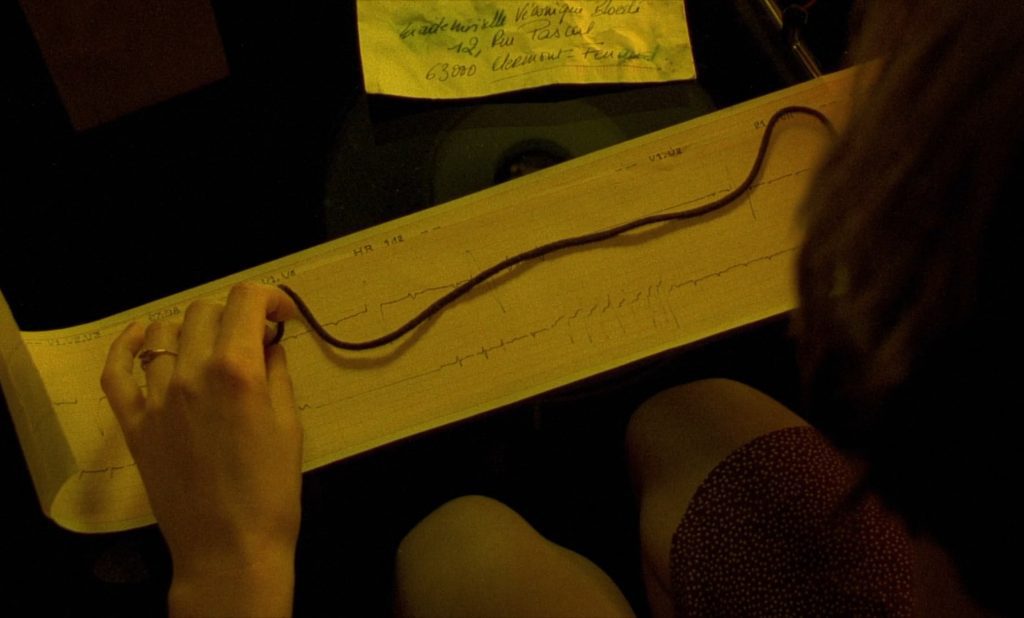
In contrast, Véronique’s story has none of the cheap triumphalism of Weronika’s success story (that is, if we take her death as symbolic instead of negating her success). Véronique’s defining moment occurs at the Saint-Lazare café when she runs away from Fabbri, right after a chain of clues lures her all the way from Clermont-Ferrand to Paris to meet him. It’s not that she doubts her love, or that she regards him as a creep for waiting there 48 hours and presuming on her arrival – rather it’s because he reveals his seduction was a psychological test for a character in his next book. In other words, Véronique resists becoming “just a character”. She fears being a mere puppet, not unlike the way Weronika, marching step by step to her glorious climax, had been. If a character is going to come to life, she must be allowed to escape her author’s control.
Although Fabbri’s puppets are controlled directly by hand with the aid of small sticks, a traditional marionette moves on strings. A string motif runs through the film, and we hear that one of Fabbri’s fairy tales is about a shoelace. The first of three clues he mails to Véronique is a shoelace, and she initially tosses it in the garbage, but when a dancing beam of light falls on a similar string in her apartment, she goes back to retrieve it. A previous beam was a prank from a window across the street, but when the neighbor closes his shutters, a magical beam takes its place and homes in on the string – a deus ex machina calling attention to the string’s symbolic importance. Whereas Weronika had snapped a similar string on her sheet music folder in a premonition of her death, Véronique will match her shoelace to an electrocardiogram. A string therefore both animates a puppet and represents life for Véronique.
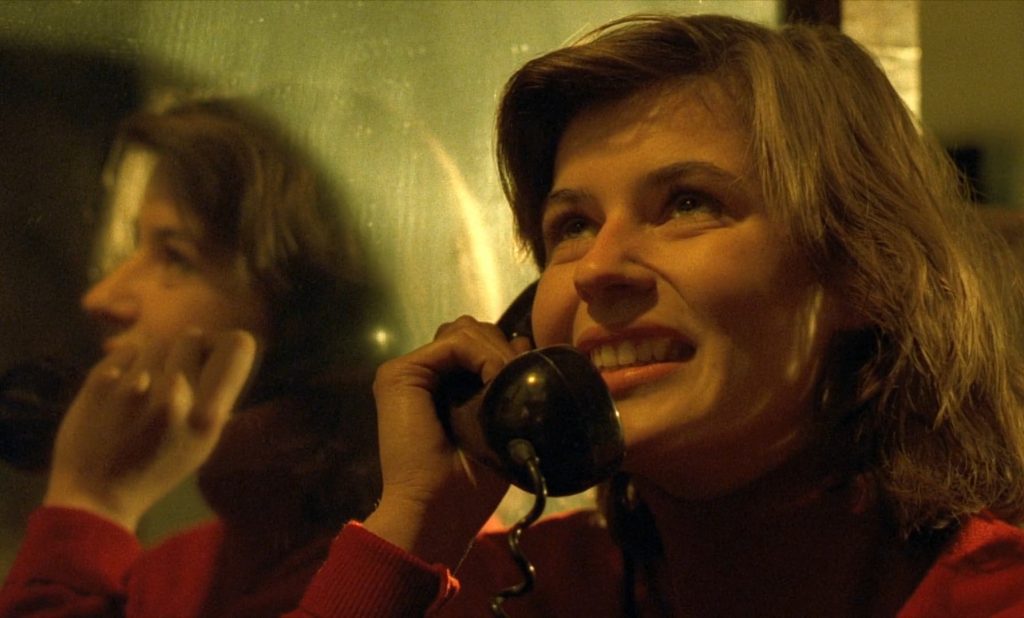
Véronique’s coming-to-life is a process of self-discovery, like a puppet gaining self-consciousness. The film is filled with reflections in windows and mirrors, but also with reflections in the structural sense as Véronique’s story echoes Weronika’s. At one point, instead of finding her own face reflected in her window, Weronika sees an old woman hunched over in the street below, like an ominous reflection of her impending death. During a music class Véronique also sees an old woman outside, but she uses the occasion to correct a student who’s off-key, as if resisting the omen and setting a new path. The pervert flashing his parts to Weronika is mirrored in Fabbri’s anonymous nighttime phone call to Véronique, but this time she takes charge, telling him to hang up first. Both characters fall to the street while rushing, but we only see Véronique pick herself up. Weronika puts a ring to her eye right before her fatal performance, but Véronique does the same immediately before a more constructive “meeting with her maker” when she wins Fabbri’s declaration of love.
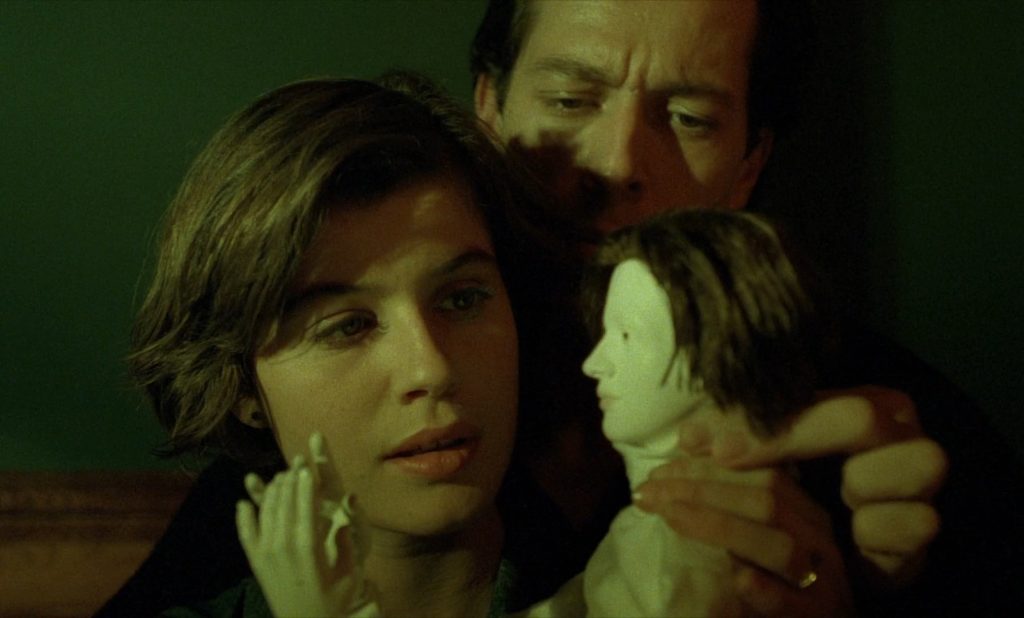
The moment of resurrection, the figurative unfolding of Véronique’s wings, occurs in the penultimate scene in Fabbri’s studio when she operates the puppet modeled after her, like a puppet moving her own strings. It’s not a moment of triumph but of freedom. Fabbri then starts telling his new story, which mirrors the film’s plot, and she simply walks away without a word – autonomous at last. As she returns to her father, her head merges with a reflection in her windshield as if she’s growing out of a tree, and the final image is her hand on a tree trunk, like a former puppet touching her raw material with new self-awareness.
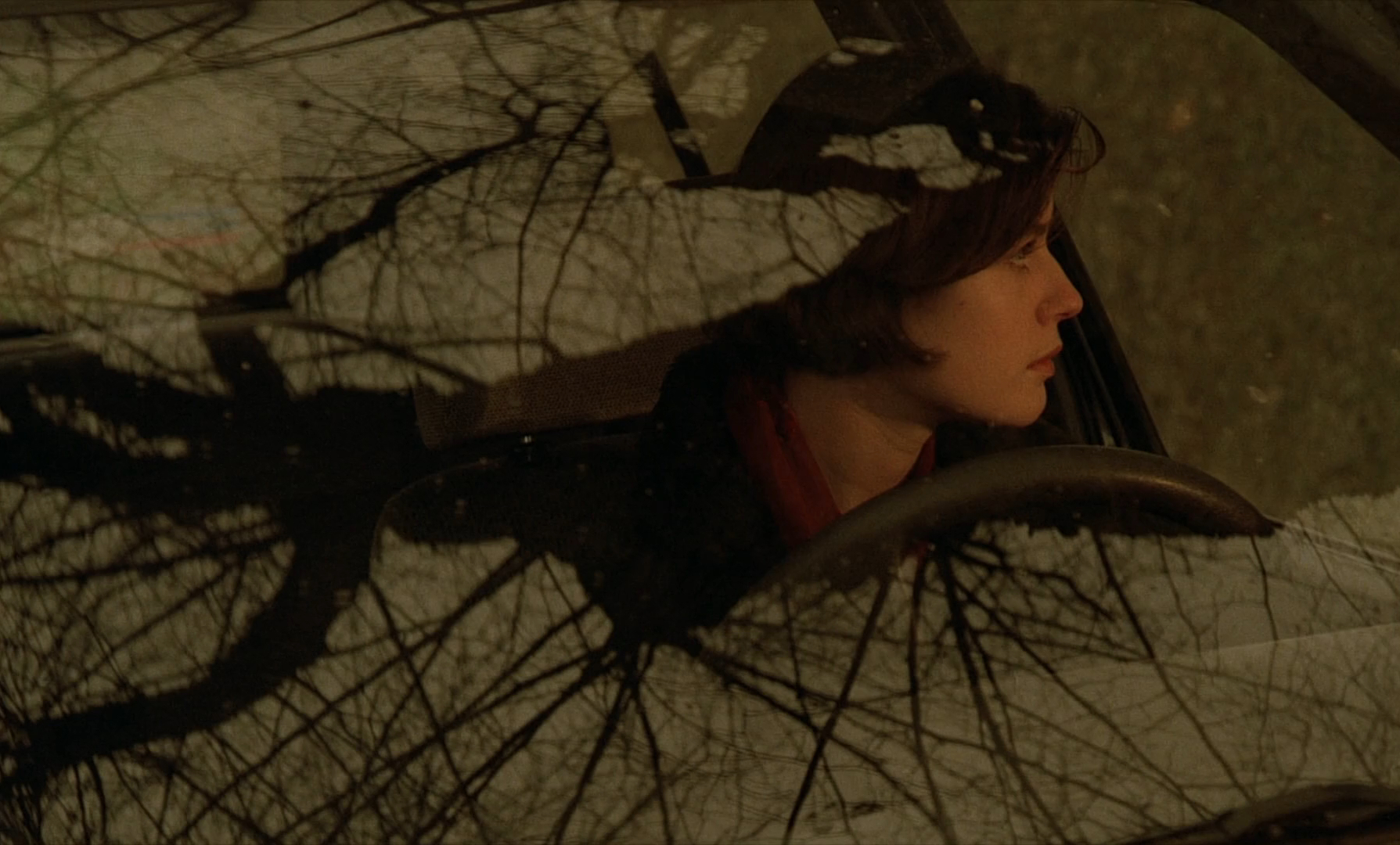
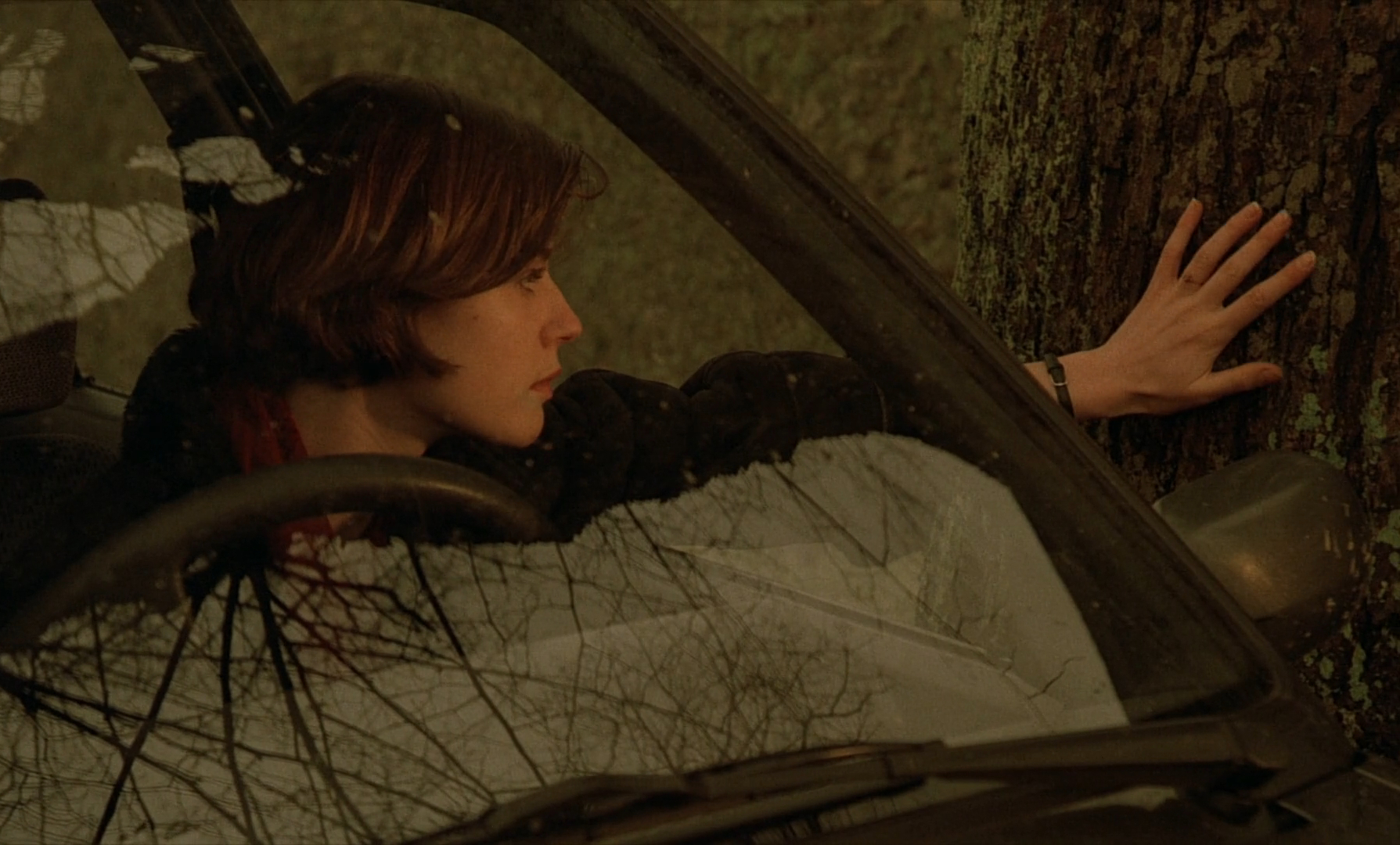
At this point the story opens up to an array of broader meanings, beyond the topic of artistic creation. What’s true for a puppet or a film character is all the more true for a human being. The picture of freedom in the last scenes segues into Kieślowski’s next film Three Colors: Blue, which focuses on the French ideal of Liberté, and at last we can place this film in its historical context as a celebration of the greater freedom sweeping through Europe.
CONNECTIONS:
Vampyr – Point of view from a corpse lying in a coffin; commentary on artistic creation
All About Eve – Story hinges on a performer’s moment of recognition, withdrawing from this moment and critiquing it
Vivre sa vie – Insistence on the independence of a character from the artwork she belongs to
Pierrot le fou – Commedia dell’arte character as a representative of art in general
Blade Runner – Artificial character meeting his/her maker and wishing for more life
Rosalyne and the Lions – Caution against an excess of control in artistic creation
Enemy – Enigmatic story of two identical but unrelated persons